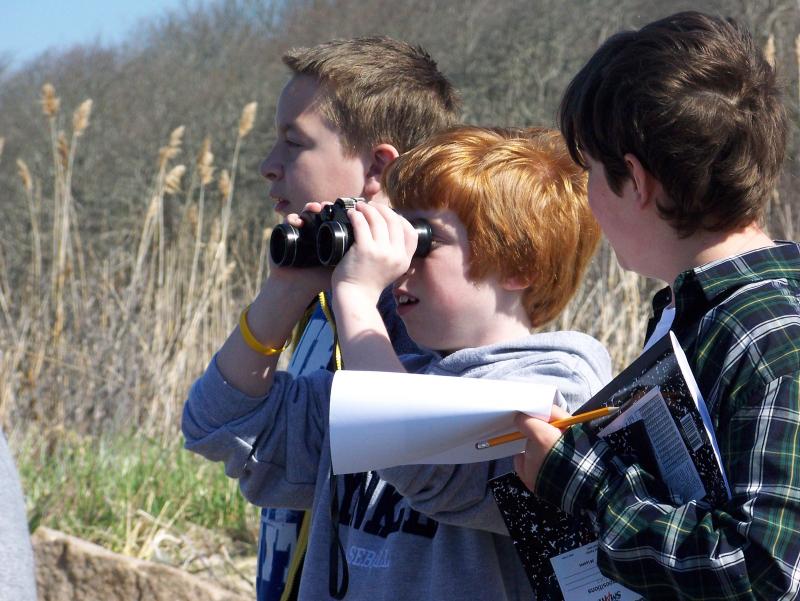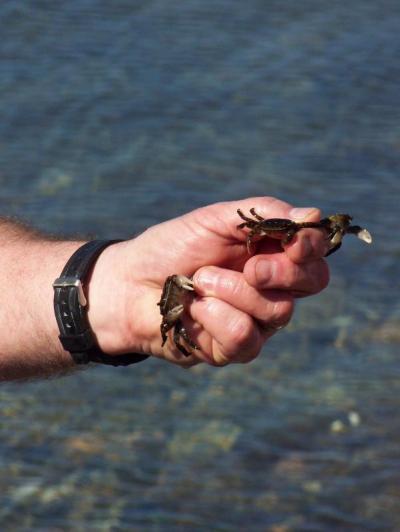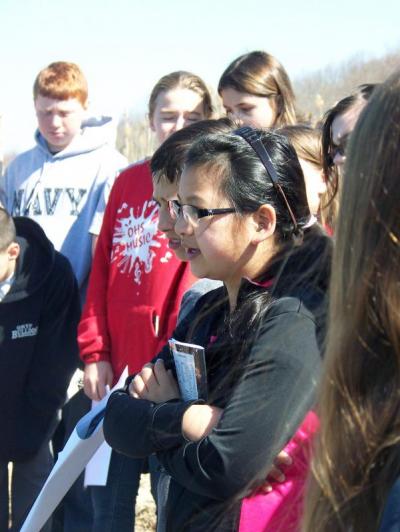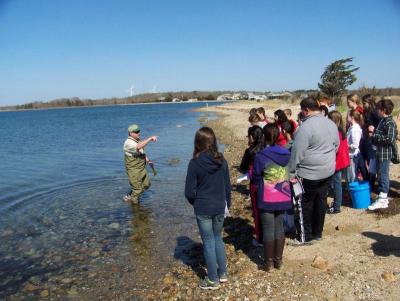Students get outside for wildlife lessons
Along the shore of Shaws Cove, an Old Hammondtown School student made a surprising discovery at Nasketucket Bay State Reservation on Friday morning.
It came during a field trip, after Brian Butler, president of environmental firm Oxbow Associates, Inc., challenged anyone to find a blue mussel, once plentiful in Buzzards Bay.
“There used to be rafts of blue mussels here ten years ago,” Butler said while holding an Asian shore crab. The crabs, an invasive species, have decimated the mussel population in recent years.
Students scoured the rocks and sand for marine life for Butler to identify, and then, 12-year-old Patrick Janicki handed him the elusive mollusk.
“This is pretty amazing to see,” Butler said. “It’s pretty nice to see too, because I don’t think [the mussels] are coming back.”
The kids, all sixth grade students, were among 75 classmates who traveled to the reservation. They learned about three different wildlife habitats from local environmentalists who volunteered to teach.
For students, the day marked a return to the site after a four-year absence. Once a regular event, budget constraints had cut the trip from school programming.
A donation from the Mattapoisett Land Trust made Friday’s field trip possible.
Though originally planned for three weeks ago, the event was postponed due to weather, said land trust President Gary Johnson.
Students attended three stations set up throughout the 209-acre park to learn about wildlife habitats. Mattapoisett Conservation Agent Elizabeth Leidhold spoke about vernal pools while Philip Benjamin, of Benjamin Forestry Service Inc., explained woodlands.
Butler’s “classroom” was the rocky intertidal zone at the end of the reservation’s Salt Marsh trail.
Students listened as he talked about marine life surviving (and thriving) in the harsh environment found between sand and sea, like barnacles, that live in an area affected by daily tides.
Butler plucked plants and animals from the bay to demonstrate the variety of life. Clumps of thick, green seaweed (known as Dead Man’s Fingers) dangled from his fingers as students asked questions.
“I noticed a lot of slipper shells on the shore, is that normal,” asked sixth grade student Mia Quinlan.
Yes it is, he said, noting when the mussels disappeared slipper shells, also bottom feeders, had less competition for food.
And though some of those animals “probably have less computing power than your average iPod” he urged the kids to look at their world from a different perspective from time to time.
“Not everything has the same view of the planet that we do,” he said.

















